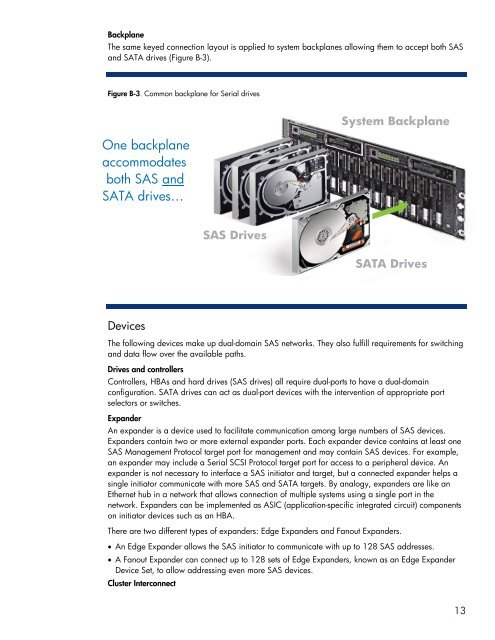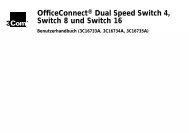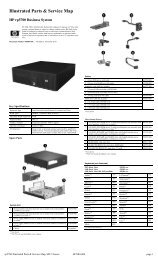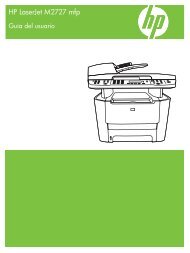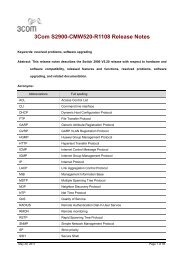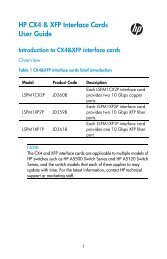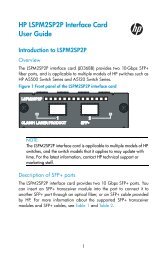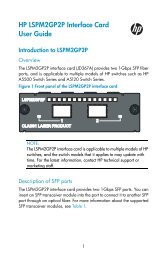Redundancy in enterprise storage networks using dual-domain SAS ...
Redundancy in enterprise storage networks using dual-domain SAS ...
Redundancy in enterprise storage networks using dual-domain SAS ...
Create successful ePaper yourself
Turn your PDF publications into a flip-book with our unique Google optimized e-Paper software.
Backplane<br />
The same keyed connection layout is applied to system backplanes allow<strong>in</strong>g them to accept both <strong>SAS</strong><br />
and SATA drives (Figure B-3).<br />
Figure B-3. Common backplane for Serial drives<br />
One backplane<br />
accommodates<br />
both <strong>SAS</strong> and<br />
SATA drives…<br />
System Backplane<br />
<strong>SAS</strong> Drives<br />
SATA Drives<br />
Devices<br />
The follow<strong>in</strong>g devices make up <strong>dual</strong>-doma<strong>in</strong> <strong>SAS</strong> <strong>networks</strong>. They also fulfill requirements for switch<strong>in</strong>g<br />
and data flow over the available paths.<br />
Drives and controllers<br />
Controllers, HBAs and hard drives (<strong>SAS</strong> drives) all require <strong>dual</strong>-ports to have a <strong>dual</strong>-doma<strong>in</strong><br />
configuration. SATA drives can act as <strong>dual</strong>-port devices with the <strong>in</strong>tervention of appropriate port<br />
selectors or switches.<br />
Expander<br />
An expander is a device used to facilitate communication among large numbers of <strong>SAS</strong> devices.<br />
Expanders conta<strong>in</strong> two or more external expander ports. Each expander device conta<strong>in</strong>s at least one<br />
<strong>SAS</strong> Management Protocol target port for management and may conta<strong>in</strong> <strong>SAS</strong> devices. For example,<br />
an expander may <strong>in</strong>clude a Serial SCSI Protocol target port for access to a peripheral device. An<br />
expander is not necessary to <strong>in</strong>terface a <strong>SAS</strong> <strong>in</strong>itiator and target, but a connected expander helps a<br />
s<strong>in</strong>gle <strong>in</strong>itiator communicate with more <strong>SAS</strong> and SATA targets. By analogy, expanders are like an<br />
Ethernet hub <strong>in</strong> a network that allows connection of multiple systems us<strong>in</strong>g a s<strong>in</strong>gle port <strong>in</strong> the<br />
network. Expanders can be implemented as ASIC (application-specific <strong>in</strong>tegrated circuit) components<br />
on <strong>in</strong>itiator devices such as an HBA.<br />
There are two different types of expanders: Edge Expanders and Fanout Expanders.<br />
• An Edge Expander allows the <strong>SAS</strong> <strong>in</strong>itiator to communicate with up to 128 <strong>SAS</strong> addresses.<br />
• A Fanout Expander can connect up to 128 sets of Edge Expanders, known as an Edge Expander<br />
Device Set, to allow address<strong>in</strong>g even more <strong>SAS</strong> devices.<br />
Cluster Interconnect<br />
13


